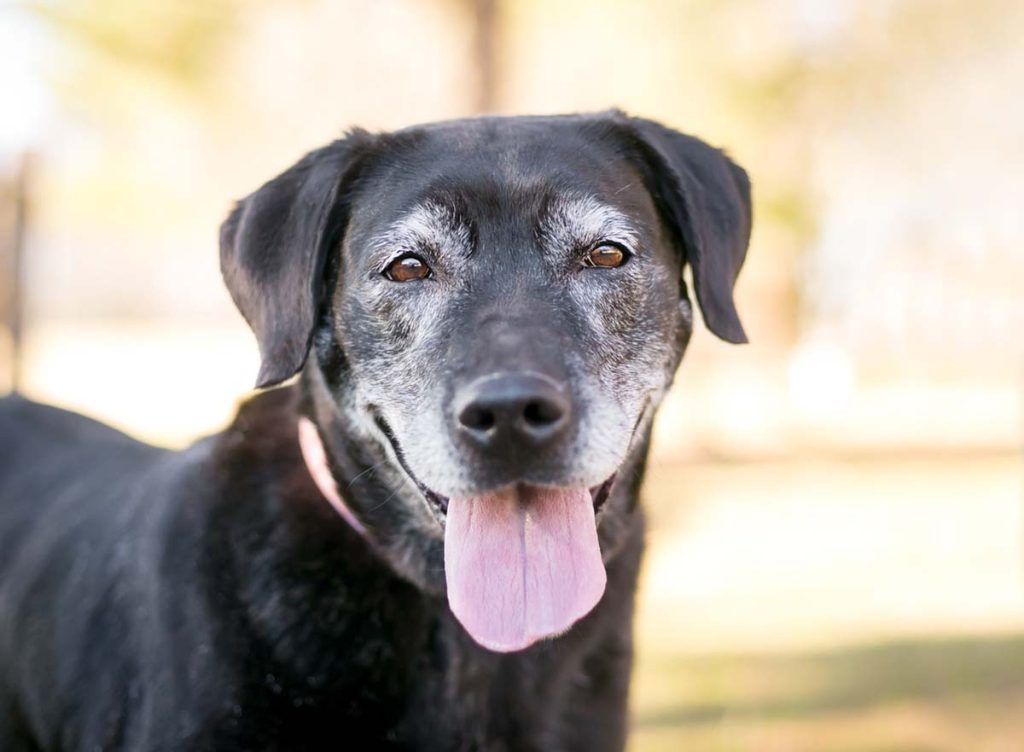You might have heard about certain coat color associations with health problems. For example, there’s the contention that all white dogs are deaf or blind. Although it’s not as straightforward as simply the color of a dog’s coat, there can be genetic associations between coat color and certain problems like congenital deafness. But what is black dog syndrome?
Black dog syndrome is a little different from those other coat colors and their related health problems because this particular coat color has a social problem. Let’s take a look at just what black dog syndrome is, whether it’s real or not, and what kinds of problems it can cause.
What Exactly is Black Dog Syndrome?
Black dog syndrome, also known as BDS or big black dog syndrome, is a phenomenon whereby dogs with darker coat colors (often large dogs) get passed up for pet adoption. This may be due to a number of reasons.
Similar to other black animals, like black cats, some potential adopters may associate black dogs with evil or bad luck and opt for lighter-colored dogs. The color black has long been associated with witchcraft and other bad influences, as exemplified by another problem, that of black cat syndrome.
Many animal shelter workers claim that shelter dogs with black fur have lower adoption rates and take longer to find their forever homes. This might even lead to the euthanasia of dogs with black coats in shelters that don’t have a no-kill policy.
Of course, there are many breeds that commonly have black coat colors. Among these are black labs, Doberman Pinschers, Rottweilers, and some pitbulls.
So is it true? Do dogs of other colors get adopted more readily than black dogs? And what are the origins of these beliefs, if they really affect adoption rates? Let’s start with the origins.

The Mythological Origins of Black Dog Syndrome
Black dogs have frequently been portrayed as guardians of the underworld and bad omens in general. This association with evil may stem from the scavenging habits of dogs, a survival mechanism that likely forged the original bond between humans and the ancestors of modern dogs.
As wild wolves followed foraging groups of humans, a kind of mutualism developed whereby the wolves scavenged food left behind or discarded by the humans and acted as an early warning system for other intruders in the area. That may have then led to humans taking wolf pups from the den to tame them as pets or camp companions.
This would have ultimately altered the genetic makeup of the tamed wolves, thereby resulting in domesticated dogs. Still, those scavenging habits and their wolf-like ancestry may have given rise to the myths about dogs with dark coats.
In much of the mythology throughout Europe, black dogs are portrayed as associated with evil entities like demons. In the folklore of the British Isles, they are described as hellhounds and regarded as omens of death.
In Greek mythology, Cerberus is portrayed as a three-headed black dog that guards the gate to the underworld to prevent the dead from escaping. While we now think of this as pure myth, those stories are part of a long tradition in human culture and may play a subconscious role in choosing a pet. But is black dog syndrome real?
Is Black Dog Syndrome Real?
So do black pets have a more difficult time being adopted out? Do shelter animals with dark coats have a substantially different length of stay in the shelter than those animals with lighter-colored coats? The answer to that may depend on who you ask.
A study conducted by sociologists at the University of Louisville found that the answer was more nuanced than simply considering coat color. While there was no straightforward relationship found, when they added certain controls, they did find that dogs that were entirely black did have somewhat lower odds of adoption, which corresponds with a higher euthanasia risk.
They also found, however, that breed category, size, and purebred status were stronger predictors of what makes for adoptable pets than coat color. According to this study, which included more than 7,000 animals, black dog syndrome was not supported at all. In fact, smaller dogs that were either partly or wholly black were more likely to be euthanized than larger dogs.
In 2013, ASPCA Vice President of Shelter Research, Dr. Emily Weiss, told a Today reporter that they found no indication that black dogs are less adoptable dogs than dogs of other colors. In fact, she noted that the myth had been completely busted. So if coat color does not predict adoptability, then what does?
What Other Features Might Affect Dog Adoption?
While there could be some subconscious association of black dogs with bad omens or evil, there are likely other more practical reasons why black dogs may be passed over in adoption kennels. Here are a few possibilities:
They Don’t Photograph Well
Potential owners frequently rely on first impressions they get from photos that appear on social media accounts of rescue groups and animal shelters. Black dogs can be difficult to photograph and may appear more as a black blob. That can affect whether those potential adopters will even give them a second look.
Humane Society photographers have also noted that the eyes of a black animal don’t stand out as much in photos, which is why they recommend shooting photos of them outside in indirect light. If that fails, it’s also possible to use a photo editor program to bring out some of the important details.
Their Black Color Can Make Facial Expressions Harder to See
Because of their black color, it can be more difficult to discern the facial expressions of black animals. When people can’t see their face clearly, they often feel like they can’t get a good read on the dog’s personality. Calling the dog over so a potential adopter can see their face more clearly could help with that problem.
Lower Visibility in Shelters
The lower visibility in shelters may be due, in part, to the fact that the lighting in shelters is often not the best. If a potential adopter can’t see the black dog well, they are less likely to spend much time with him. It seems like a minor point, but improving lighting in shelters or taking potential owners into the cage with an animal so they can get a better look could make a difference.
The Adoption Project at JustFoodForDogs
At JustFoodForDogs, we believe that all dogs deserve a wonderful forever home and a life full of love for many healthy years to come. That’s why we created a department that is dedicated solely to helping support rescue groups. It’s called the Adoption Project, and its mission is to help ensure all pets have access to the best nutrition, no matter what kinds of circumstances they might be in.
That’s why the Adoption Project provides balanced, fresh, whole-food diets to rescue groups in order to provide their dogs with the foundation they need for a long, healthy, and happy life. We believe that’s what every dog deserves.
